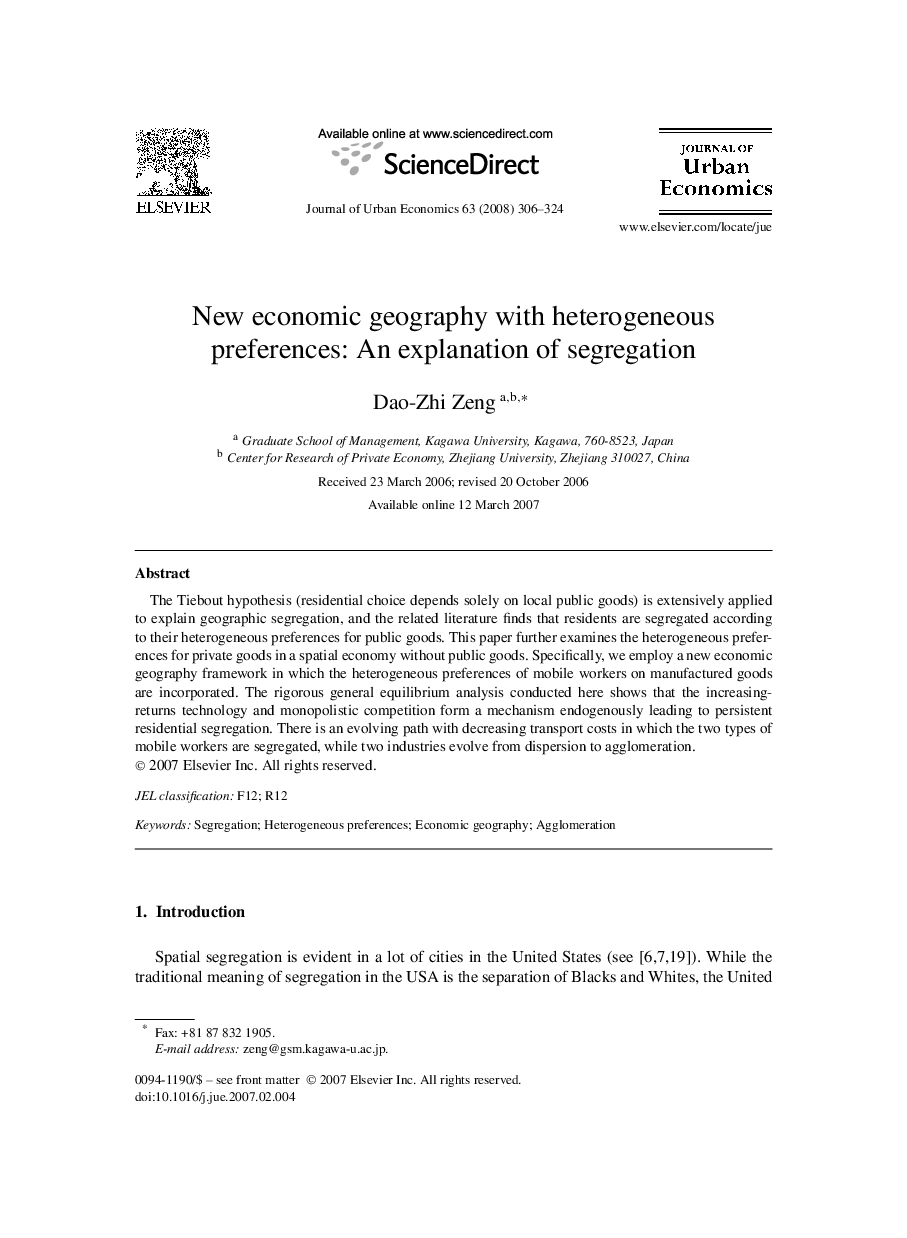| Article ID | Journal | Published Year | Pages | File Type |
|---|---|---|---|---|
| 971633 | Journal of Urban Economics | 2008 | 19 Pages |
The Tiebout hypothesis (residential choice depends solely on local public goods) is extensively applied to explain geographic segregation, and the related literature finds that residents are segregated according to their heterogeneous preferences for public goods. This paper further examines the heterogeneous preferences for private goods in a spatial economy without public goods. Specifically, we employ a new economic geography framework in which the heterogeneous preferences of mobile workers on manufactured goods are incorporated. The rigorous general equilibrium analysis conducted here shows that the increasing-returns technology and monopolistic competition form a mechanism endogenously leading to persistent residential segregation. There is an evolving path with decreasing transport costs in which the two types of mobile workers are segregated, while two industries evolve from dispersion to agglomeration.
